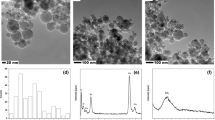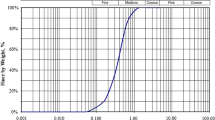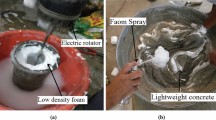Abstract
This work evaluates the potential use of a new foam concrete design for structural applications resulting from ultra-high performance concrete mix design by incorporating homogeneous micro-foam to create a lightweight cementitious composite (LCC). The fresh and mechanical properties of LCC were studied with a density ranging from 800 to 1700 kg/m3. Results showed that the strength development of LCC with increasing density was much greater than that of conventional foam concrete. New strength equations were proposed to describe the relationship among density, compressive strength and flexural strength of LCC in comparison to well-established concrete equations in the ACI code and published literature. Based on the experimental results, LCC with a density of 1500 kg/m3 (LCC-1500) was selected for further investigation because of its high strength-to-density ratio, and carbon nanofibers (CNFs) were incorporated to produce CNF-LCC-1500 to study the mechanical properties and long-term properties including shrinkage and creep behaviour. Generally, CNF-LCC-1500 exhibited equivalent or even better performance in both short- and long-term properties than normal-weight concrete and lightweight concrete with similar compressive strength. In addition, a hyperbolic equation was applied to predict the creep development with ages of CNF-LCC-1500. Furthermore, CNFs could effectively improve both short- and long-term properties due to the optimized nano- and micropore structure.










Similar content being viewed by others
References
American Concrete Institute (2006) ACI PRC-523.1-06 Guide for cast-in-place low density cellular concrete. ACI Committee 523, Farmington Hills, MI, USA
Huang J-j, Su Q, Zhao W-h, Li T, Zhang X-x (2017) Experimental study on use of lightweight foam concrete as subgrade bed filler of ballastless track. Constr Build Mater 149:911
Raj A, Sathyan D, Mini K (2019) Physical and functional characteristics of foam concrete: a review. Constr Build Mater 221:787
Jones M, McCarthy A (2005) Preliminary views on the potential of foamed concrete as a structural material. Mag Concr Res 57:21
Cox L, van Dijk S (2002) Foam concrete: a different kind of mix. Concrete 36
Ramamurthy K, Nambiar EK, Ranjani GIS (2009) A classification of studies on properties of foam concrete. Cement Concr Compos 31:388
Zhang D, Tan KH, Dasari A, Weng Y (2020) Effect of natural fibers on thermal spalling resistance of ultra-high performance concrete. Cement Concr Compos 109:103512. https://doi.org/10.1016/j.cemconcomp.2020.103512
Fu Y, Wang X, Wang L, Li Y (2020) Foam concrete: a state-of-the-art and state-of-the-practice review. Adv Mater Sci Eng 2020
Chica L, Alzate A (2019) Cellular concrete review: new trends for application in construction. Constr Build Mater 200:637
Hajimohammadi A, Ngo T, Mendis P (2018) Enhancing the strength of pre-made foams for foam concrete applications. Cement Concr Compos 87:164
Tan J, Lim S, Lim J (2005) Flexural behaviour of reinforced lightweight foamed concrete beams. Mag Concr Res 27:21
Jones MR, McCarthy MJ, McCarthy A (2003) Moving fly ash utilization in concrete forward: a UK perspective. In: Proceedings of the 2003 international ash utilisation symposium, centre for applied energy research. University of Kentucky. 20
Roslan AF, Awang H, Mydin MAO (2013) Effects of various additives on drying shrinkage, compressive and flexural strength of lightweight foamed concrete (LFC). Adv Mater Res 626:594
McGovern G (2000) Manufacture and supply of ready-mix foamed concrete. One-day awareness seminar on foamed concrete: properties, applications and potential. 12
Tada S, Nakano S (1983) Microstructural approach to properties of moist cellular concrete. In: proceedings autoclaved aerated concrete, moisture and properties. Amsterdam: Elsevier: 71
Nambiar EK, Ramamurthy K (2009) Shrinkage behavior of foam concrete. J Mater Civ Eng 21:631
Chindaprasirt P, Rukzon S, Sirivivatnanon V (2008) Resistance to chloride penetration of blended Portland cement mortar containing palm oil fuel ash, rice husk ash and fly ash. Constr Build Mater 22:932
Regan P, Arasteh AR (1990) Lightweight aggregate foamed concrete. Struct Eng 68:167
Gencel O, Nodehi M, Bayraktar OY et al (2022) Basalt fiber-reinforced foam concrete containing silica fume: an experimental study. Constr Build Mater 326:126861
Raj B, Sathyan D, Madhavan MK, Raj A (2020) Mechanical and durability properties of hybrid fiber reinforced foam concrete. Constr Build Mater 245:118373
Videla C, Carreira DJ, Garner N (2008) Guide for modeling and calculating shrinkage and creep in hardened concrete. ACI report 209
Bazant ZP, Li G-H (2008) Comprehensive database on concrete creep and shrinkage. ACI Mater J 105:635
Wendling A, Sadhasivam K, Floyd RW (2018) Creep and shrinkage of lightweight self-consolidating concrete for prestressed members. Constr Build Mater 167:205
Agrawal Y, Gupta T, Sharma R, Panwar NL, Siddique S (2021) A comprehensive review on the performance of structural lightweight aggregate concrete for sustainable construction. Constr Mater 1:39
Falliano D, De Domenico D, Ricciardi G, Gugliandolo E (2018) Experimental investigation on the compressive strength of foamed concrete: effect of curing conditions, cement type, foaming agent and dry density. Constr Build Mater 165:735
Chandra S (1996) Waste materials used in concrete manufacturing. Elsevier
Van der Wegen G, Bijen J (1985) Properties of concrete made with three types of artificial PFA coarse aggregates. Int J Cem Compos Lightweight Concrete 7:159
American Concrete Institute (2003) ACI 213R-03 guide for structural lightweight-aggregate concrete. ACI Committee 213, Farmington Hills, MI, USA
Nadesan MS, Dinakar P (2017) Structural concrete using sintered flyash lightweight aggregate: a review. Constr Build Mater 154:928
Zhang D, Dasari A, Tan KH (2018) On the mechanism of prevention of explosive spalling in ultra-high performance concrete with polymer fibers. Cem Concr Res 113:169. https://doi.org/10.1016/j.cemconres.2018.08.012
Rogers G (1957) On the creep and shrinkage characteristics of solite concretes. In: proceedings of world conference on prestressed concrete. 2.1
Wang Z, Li X, Jiang L, Wang M, Xu Q, Harries K (2020) Long-term performance of lightweight aggregate reinforced concrete beams. Constr Build Mater 264:120231
Lopez M (2005) Georgia Institute of Technology
Wu F, Liu C, Sun W, Zhang L, Ma Y (2019) Mechanical and creep properties of concrete containing apricot shell lightweight aggregate. KSCE J Civ Eng 23:2948
Chen Z, Lim JLG, Yang E-H (2016) Ultra high performance cement-based composites incorporating low dosage of plasma synthesized carbon nanotubes. Mater Des 108:479
Wang S, Lim JLG, Tan KH (2020) Performance of lightweight cementitious composite incorporating carbon nanofibers. Cement Concr Compos 109:103561
Funk JE, Dinger DR (2013) Predictive process control of crowded particulate suspensions: applied to ceramic manufacturing. Springer, Cham
Wang S, Tan KH (2021) Flexural performance of reinforced carbon nanofibers enhanced lightweight cementitious composite (CNF-LCC) beams. Eng Struct 238:112221
Wang S, Ng YH, Tan KH, Dasari A (2021) Thermal properties of carbon nanofibers enhanced lightweight cementitious composite under high temperature. Constr Build Mater 307:124358
DIN EN (2001) Deutsches Institut für Normung e. V., Ausgabe Juli 206–1: Beton–Teil 1: Festlegung, Eigenschaften, Herstellung und Konformität
ASTM (2014) ASTM C230-14 Standard specification for flow table for use in tests of hydraulic cement. ASTM International, Farmington Hills, MI, USA
Karl S, Worner J (1993) Foamed concrete-mixing and workability. Special concrete-workability and mixing. E&FN Spon London
BSI (2011) BS EN 12390–3 testing hardened concrete - part 3: compressive strength of test specimens. British Standards Institution, London
ASTM (2014) ASTM C348-14 standard test method for flexural strength of hydraulic-cement mortars. ASTM International, Farmington Hills, MI, USA
BSI (2013) BS EN 12390–13 Testing hardened concrete - part 13: determination of secant modulus of elasticity in compression. European Committee For Standardization, London
ASTM (2010) ASTM C426-16 Standard test method for linear drying shrinkage of concrete masonry units. ASTM International, Farmington Hills, MI, USA
BSI (2009) BS ISO 1920–9:2009 Testing hardened concrete - part 9: determination of creep of concrete cylinders in compression. British Standards Institution, London
Schauerte M, Trettin R (2012) Neue Schaumbetone mit gesteigerten mechanischen ind physikalischen Eigenschaften. In: proceedings of the 18th Ibausil, international conference on building materials. Bauhaus-Universitat Weimar, Weimar, Germany.
Jones M, McCarthy A (2005) Behaviour and assessment of foamed concrete for construction applications. In: use of foamed concrete in construction: proceedings of the international conference, University of Dundee, Scotland, UK. pp. 61
Committee A, Standardization IOf (2008) Building code requirements for structural concrete (ACI 318-08) and commentary.American Concrete Institute
Sanchez F, Sobolev K (2010) Nanotechnology in concrete–a review. Constr Build Mater 24:2060
Li GY, Wang PM, Zhao X (2005) Mechanical behavior and microstructure of cement composites incorporating surface-treated multi-walled carbon nanotubes. Carbon 43:1239
Peyvandi A, Soroushian P, Lu J, Balachandra AM (2014) Enhancement of ultrahigh performance concrete material properties with carbon nanofiber. Advances in Civil Engineering 2014
Konsta-Gdoutos MS, Metaxa ZS, Shah SP (2010) Multi-scale mechanical and fracture characteristics and early-age strain capacity of high performance carbon nanotube/cement nanocomposites. Cement Concr Compos 32:110
BSI (2004) Eurocode 2: design of concrete structures - part 1–1: general rules and rules for buildings. BS EN 1992-1-1, London
Wu L, Farzadnia N, Shi C, Zhang Z, Wang H (2017) Autogenous shrinkage of high performance concrete: a review. Constr Build Mater 149:62
Shimomura T, Maekawa K (1997) Analysis of the drying shrinkage behaviour of concrete using a micromechanical model based on the micropore structure of concrete. Mag Concr Res 49:303
Society C (2002) A Guide to the Selection of Admixtures for Concrete: Report of a Concrete Society Working Party. Concrete Society
Mindess S, Young F, Darwin D (2003) Concrete 2nd Editio. Pearson Education Inc, Upper Saddle River, NJ
Ziembicka H (1977) Effect of micropore structure on cellular concrete shrinkage. Cement Concr Res 7:323
Georgiades A, Ftikos C, Marinos J (1991) Effect of micropore structure on autoclaved aerated concrete shrinkage. Cem Concr Res 21:655
Aligizaki KK (2005) Pore structure of cement-based materials: testing, interpretation and requirements. CRC Press
Hou L, Li J, Lu Z, Niu Y, Jiang J, Li T (2019) Effect of nanoparticles on foaming agent and the foamed concrete. Constr Build Mater 227:116698
Neville AM (1995) Properties of concrete. Longman London
Hewlett P, Liska M (2019) Lea’s chemistry of cement and concrete. Butterworth-Heinemann
Nguyen D-T, Alizadeh R, Beaudoin JJ, Pourbeik P, Raki L (2014) Microindentation creep of monophasic calcium–silicate–hydrates. Cement Concr Compos 48:118
Barbhuiya S, Chow P (2017) Nanoscaled mechanical properties of cement composites reinforced with carbon nanofibers. Materials 10:662
Best C, Polivka M (1959) Creep of lightweight concrete. Mag Concr Res 11:129
Tang W, Cui H, Wu M (2014) Creep and creep recovery properties of polystyrene aggregate concrete. Constr Build Mater 51:338
Lopez M, Kahn LF, Kurtis KE (2004) Creep and shrinkage of high-performance lightweight concrete. Mater J 101:391
American Concrete Institute (2008) ACI 209.2R-08 Guide for modeling and calculating shrinkage and creep in hardened concrete. ACI Committee 209, Farmington Hills, MI, USA
Gardner N (2004) Comparison of prediction provisions for drying shrinkage and creep of normal-strength concretes. Can J Civ Eng 31:767
fib (2013) CEB-FIP Model Code 2010. Comit Euro-International du Beton, Lausanne, Switzerland
Acknowledgements
The authors would like to acknowledge the materials support of ceEntek Pte Ltd.
Author information
Authors and Affiliations
Corresponding author
Ethics declarations
Conflict of interest
The authors declare that they have no conflict of interest.
Additional information
Publisher's Note
Springer Nature remains neutral with regard to jurisdictional claims in published maps and institutional affiliations.
Rights and permissions
Springer Nature or its licensor holds exclusive rights to this article under a publishing agreement with the author(s) or other rightsholder(s); author self-archiving of the accepted manuscript version of this article is solely governed by the terms of such publishing agreement and applicable law.
About this article
Cite this article
Wang, S., Lim, J.L.G. & Tan, K.H. Strength, shrinkage and creep of lightweight cementitious composite incorporating carbon nanofibers. Mater Struct 55, 196 (2022). https://doi.org/10.1617/s11527-022-02025-4
Received:
Accepted:
Published:
DOI: https://doi.org/10.1617/s11527-022-02025-4




